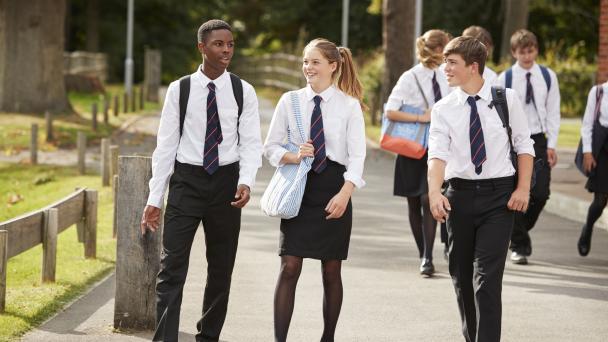Life at 17: New GUS data offers insight into late adolescence


Calum MacGillivray is a postgraduate researcher at the University of Dundee and is in the first year of a PhD studentship project funded by the Scottish Graduate School of Social Science. He will be utilising the Growing Up in Scotland (GUS) dataset as part of that project.
My project focuses on understanding the impact of primary to secondary school transitions on young people’s attainment over time. This will involve secondary analysis of the Growing Up in Scotland (GUS) dataset and linked educational administrative datasets. To date, most research on primary to secondary school transitions has used small samples and/or data collected over the short-term. GUS data provides an opportunity to conduct a robust, novel, longer-term exploration of these transitions, taking into account the varied experiences young people have in parallel.
For this project, I am conceptualising primary-secondary transitions using the Multiple and Multi-dimensional Transitions (MMT) Theory, drawing on the work of one of my supervisors, Professor Divya Jindal-Snape. According to the theory, transitions are seen as ongoing processes where people experience several interacting transitions simultaneously. These affect and are affected by the transitions of other people they interact with. For example, alongside adapting to changes in their school environment over time, a young person may also experience changes in their peer group, and those peers may also experience transitions through interacting with that person. You can read more about Professor Jindal-Snape’s MMT theory here.
With this in mind, the move from primary to secondary school is likely to initiate transitions and interact with ongoing transitions across the network of people that a young person interacts with, at school and in their wider environments.
The move from primary to secondary school is undertaken every year by a substantial proportion of children living in Scotland. In 2023, 58,205 pupils were in Primary 7 (the final year of their primary education), and almost all will move to secondary school at the same time. Research has been undertaken to identify factors associated with positive and negative effects on pupils’ experiences of these moves. Some identified factors include gender, additional support needs, socioeconomic status, and relationships with peers, teachers and family (e.g. Gilbert et al., 2021; Jindal-Snape et al., 2023).
Despite this, there is not much research that uses recent datasets to explore the longitudinal trajectories of primary-secondary transition experiences or their impact on academic attainment. Recently, some studies have used the GUS Birth Cohort 1 dataset to examine the longitudinal effects of the primary-secondary move (e.g. Gilbert et al., 2021; Smyth and Privalko, 2022; Jindal-Snape et al., 2023). However, these studies are limited to exploring the period from just before (when the child was in their penultimate year of primary school, Primary 6) to just after (when the child was in their first year of secondary school, Secondary 1) the move to secondary school. With data now available up to the final year of secondary school, this project aims to look at the longer-term trajectories of transitions experiences and attainment.
A recent study took an interesting approach to analysing longitudinal trajectories using GUS data, applying bivariate multilevel growth curve models to investigate the trajectories of conduct problems and emotional symptoms by poverty class and work intensity class. These models may be useful for this project, however, we will be looking at the trajectories of transition experience and academic attainment instead.
I am personally most looking forward to the possibility of using linked Scottish Qualifications Authority administrative data, alongside the GUS survey datasets, to explore the trajectory of attainment for pupils by the end of their school journey. This has the potential to provide some informative and impactful insights.
To get there though, I must first navigate the opening stages of my project. So far, this has involved a lot of planning, a fair number of forms, and a few protocols. Then, getting feedback, changing direction, and starting again. And while the beginning stage was difficult, I now feel that I have found my feet. I have some plans formed, I have received great feedback from my supervisors, and I feel like I am becoming more comfortable in my role.
Outside of my own research, I have been organising and chairing a research seminar series, which has been a great opportunity to meet and talk to a wide range of academics. I have also been taking part in training events, some aimed at building my skills for the analysis of the GUS dataset, and others at building my holistic skills.
The timeline for my research is that I’m hoping to complete my PhD in 2026, and will be sharing the findings in a follow-up blog…watch this space!
Sign up to our newsletter to receive regular updates about the Growing Up in Scotland study, as well as findings, events and blogs.
Click here